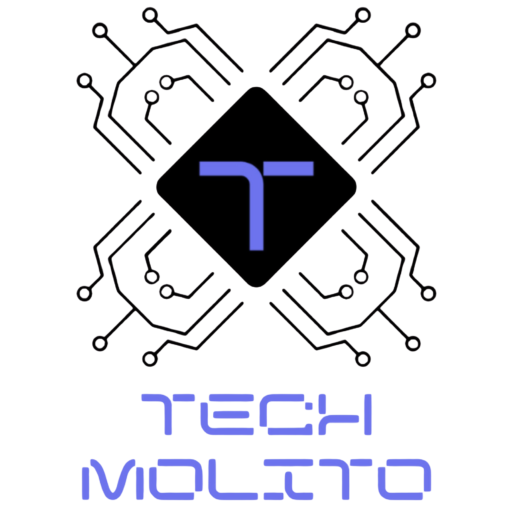In today’s tech world, using DevOps is more important than ever. It helps teams work better together. But how do you make DevOps work? The answer lies in automation tools. These tools can help streamline processes, save time, and reduce errors. This guide will introduce you to the top DevOps automation tools you can use in your projects.
What Is DevOps?
DevOps combines software development (Dev) and IT operations (Ops). The goal is to shorten the development cycle. It aims to improve the quality of software. DevOps uses automation to make things easier and faster.
Why Use DevOps Automation Tools?
Using DevOps automation tools has many perks. They speed up work by helping teams get tasks done faster. This allows teams to deliver goods more quickly. Automation also cuts errors made by humans. This leads to better quality software. These tools help teamwork by making it easier for teams to work together.
Everyone stays informed and on the same page. Furthermore automation saves time which also cuts costs. Teams can focus on more key tasks. Despite these perks some teams may hesitate to use automation. They may worry about how hard it is or cost. However the right tools can clear these concerns.

Top DevOps Automation Tools
Here are some of the top DevOps automation tools you should consider for your projects:
1. Jenkins
Jenkins is one of the most popular automation tools. It is open-source and simple to use. It allows for constant integration meaning code changes are tested and merged by itself. Jenkins has many plugins available which helps tailor the tool for specific needs.
It supports many coding languages making it flexible for different teams. Jenkins runs on a server and can be reached through a web interface. You can set up jobs to automate tasks. These jobs can build test and deploy applications by itself.
2. GitLab CI/CD
GitLab is more than just a version control system. Its CI/CD features make it a great DevOps tool. GitLab offers a full DevOps cycle. From coding to deployment everything is in one place. It lets teams work together smoothly by tracking issues and code changes with ease.
GitLab has an Auto DevOps feature that sets up CI/CD pipelines for your projects by itself. Using GitLab CI/CD can cut setup time. You can start automating tasks fast which helps teams focus on making good software.
3. Docker
Docker is a tool that helps with container packing. Container packing means putting an app and its needs into one package. Docker makes sure your app runs the same way everywhere. This takes away “it works on my machine” problems. Docker containers can be scaled easily which means you can run many instances without hassle.
Docker allows for fast deployments letting you start and stop containers quick. Docker uses images and containers. An image is a template for making containers and a container is a running instance of an image. This makes it easy to manage apps in different places.
4. Ansible
Ansible is a simple yet strong automation tool. It helps with setup management and app deployment. Ansible does not need agents to be set up making setup easy. You can make playbooks to define automation tasks. Playbooks are written in YAML which is easy to read.
Ansible makes sure that tasks are idempotent. This means running the same task many times won’t change the outcome. Using Ansible can simplify hard tasks. It helps teams automate repeat tasks without a steep learning curve making it great for teams new to DevOps.
5. Terraform
Terraform is an infrastructure as code tool. It helps manage cloud needs easily. You can define your infrastructure in code which allows for easy tracking and versioning. Terraform works with many cloud providers letting you manage needs on AWS Google Cloud and Azure.
It keeps track of your infrastructure state which helps make sure of consistency across deployments. Using Terraform can make cloud management more smooth. Teams can set up needs fast and avoid manual errors leading to quick deployments and better resource use.
6. Puppet
Puppet is another great automation tool for setup management. Puppet abstracts resources making management easier. You can define how resources should be set up. It uses a model-driven way to manage infrastructure which helps make sure systems are always in the right state.
Puppet gives detailed reports on resource status which helps teams track changes and compliance. Puppet uses a master-agent model. The master server manages setups while agents apply these setups to nodes. This makes it easy to manage many servers at once.
7. CircleCI
CircleCI is a cloud-based CI/CD tool. It helps automate the software development process. CircleCI offers fast build times speeding up the testing and deployment process. You can create custom workflows to fit your needs which allows for more flexibility in your CI/CD process.
CircleCI works well with GitHub making it easy to automate tests and deployments based on code changes. Using CircleCI can simplify your CI/CD process. It helps teams automate tasks making sure of faster and more trusted deployments.
8. SaltStack
SaltStack is a strong tool for setup management and orchestration. SaltStack can manage thousands of servers easily making it fit for big groups. It can react to events in real-time helping teams respond to changes fast.
SaltStack has a simple syntax making it easier for new users to start. Using SaltStack can improve your infrastructure management. It helps teams automate tasks at scale making sure of efficiency and consistency.
Choosing the Right DevOps Tool
With many tools around how do you choose the right one? Here are some tips. First check your project needs to understand what tasks need automation. Next think about your team’s skills. Choose tools that match their know-how.
Look for tools that work well with your current systems. This helps avoid friction in your workflow. Finally think about the costs involved. Some tools are open-source while others need subscriptions.
FAQs
1. What are DevOps automation tools?
DevOps automation tools help streamline software development and IT operations. They automate repetitive tasks, improving efficiency and reducing errors.
2. Why should I use DevOps automation tools?
Using these tools speeds up development, reduces errors, and improves collaboration. They help teams deliver quality software faster.
3. Are there free DevOps automation tools?
Yes, many tools like Jenkins and GitLab offer free versions. Open-source tools are also available for teams on a budget.
4. Can I use multiple DevOps tools together?
Absolutely! Many teams use a combination of tools. Just ensure they integrate well to avoid complications.
Conclusion
DevOps automation tools play a vital role in today’s tech landscape. They help teams streamline processes and deliver quality software quickly. By using tools like Jenkins, GitLab CI/CD, Docker, and others, you can enhance your workflow.
Remember, the right tools can make all the difference. Take the time to assess your needs and choose the best options for your projects. With the right DevOps automation tools, you can achieve better results and work more efficiently!





